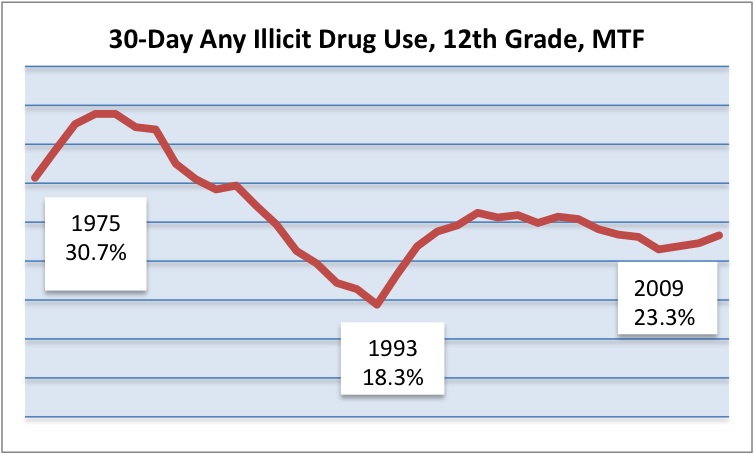 |
|
Smells like 1992By Doug Hall Unless you have been caught between two titans battling for the White House, you might not know what pressure feels like. I’ve been there, and so too has the founder of Pride Surveys,Thomas J. Gleaton. The story goes like this. In October 1992, we were ready to release the results of Pride Survey’s national report on teen drug use. The general election was 15 days away. Adolescent drug use had been on a steady and steep decline for 13 years, but the news we had in our hands was not good. Our data showed that teen drug use was on the rise again. Michael Isikoff, one of Washington’s toughest investigative journalists, caught wind of our report and heard the White House had tried to quash its release. President George H.W. Bush was in a fierce re-election fight with Arkansas Governor Bill Clinton. The headline of the Washington Post blared “White House Aide Reportedly Opposed Release.” We released the data anyway … and waited for the bombing to begin. It didn’t take long. The White House said the Pride Survey was not “nationally representative.” The drug czar released a statement saying, essentially, “nobody believes the Pride Survey.” One of the national leaders of the drug prevention movement, I guess hoping for a Bush victory, sent a letter to the Post saying much the same. “The totality of all the surveys shows drug use among high school students going down dramatically,” the White House declared. We were on a very lonely limb, and the saws were buzzing. We hoped the Monitoring the Future survey would vindicate us when it appeared after the election. No such luck. MTF reported that adolescent drug use dropped slightly from the year before, but there were “warning signs.” Our lonely limb became a year of wandering in the wilderness. And then the warning signs turned into a national nightmare. In December 1993, MTF reported a 27% increase in 12th grade any illicit drug use, from 14.4% to 18.3%. We had been vindicated, but it was a hollow victory. Adolescent drug use began to spin out of control over the next five years, ballooning by 44%. Past 30-day use of any illicit drug among 12th graders shot from 18.3% in 1993 to 26.2% in 1997, creating literally thousands of new adolescent drug addicts, untold pain, broken families, rising crime, rising fear, suffering, death, and billions of dollars in costs to taxpayers. It was a helluva price to pay for being right. Last week we saw the release of the latest Monitoring the Future data. We reported similar findings in September. Washington officials used language like “small increases” and “warning signs.” We used similar terms when we released our own data. But I am afraid it smells like 1992 all over again. I hope like all get-out that I am wrong. But by no definition are trends moving in the right direction. With the release of the Pride Survey and MTF, the president, the congress, the governors, the state legislatures, the federal and state agencies, the mayors and county commissioners are all on notice. Teen drug use is rising. But more importantly, moms and dads, teachers, beat cops, prevention specialists and counselors have been given their wake up call, too. Now, there are two choices. We can go about our business like it’s 1992. “Nobody believes that data.” “There’s no reason to panic.” “Let’s get a couple more years of trend data first.” “We’ve got other issues like the economy and health care to worry about.” Yes, we can sit and do nothing like we did before. All we have to lose is a few thousand kids. Or we can get busy and save some lives. Those are the choices now. Doug Hall is the president of Pride Surveys |
Dec. 21, 2009 HAPPY HOLIDAYS!! Our offices will be closed Dec. 24 through Jan. 4 See you in 2010! How does the Pride Survey compare to Monitoring the Future Pride
Surveys 800.279.6361 |
